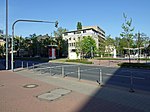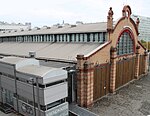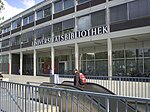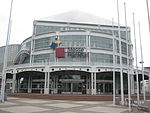AfE-Turm
1972 establishments in Germany2014 disestablishments in GermanyBuildings and structures demolished by controlled implosionBuildings and structures demolished in 2014Demolished buildings and structures in Germany ... and 5 more
Emporis template using building IDFormer skyscrapersGoethe University FrankfurtSkyscrapers in FrankfurtUniversity and college buildings completed in 1972
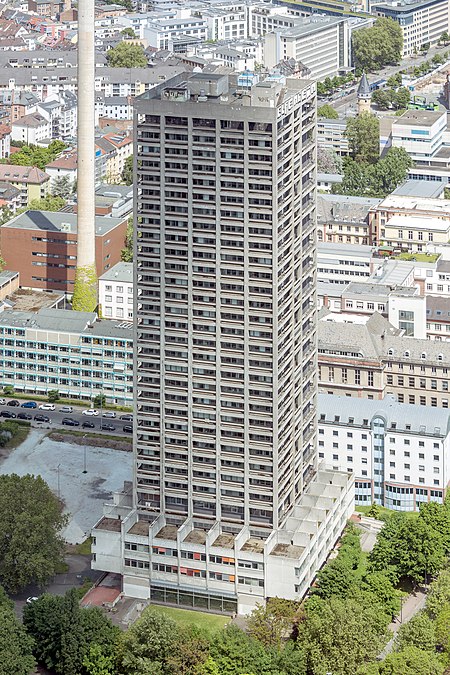
AfE-Turm ('AfE Tower') was a 38-story (32 office floors), 116 m (381 ft) skyscraper in the Westend district of Frankfurt, Germany. The building was part of the Bockenheim campus of the Johann Wolfgang Goethe University and until 2013 housed the offices and seminar rooms of the departments of Social Sciences and Education. AfE is an acronym for Abteilung für Erziehungswissenschaft (Department of Pedagogy); however, this department never moved in because it was closed before the construction of the tower was finished, which happened in 1972. The tower was demolished on February 2, 2014.
Excerpt from the Wikipedia article AfE-Turm (License: CC BY-SA 3.0, Authors, Images).AfE-Turm
Senckenberganlage, Frankfurt Westend Süd (Innenstadt 2)
Geographical coordinates (GPS) Address Nearby Places Show on map
Geographical coordinates (GPS)
| Latitude | Longitude |
|---|---|
| N 50.1161 ° | E 8.65083 ° |
Address
Senckenberganlage 17
60325 Frankfurt, Westend Süd (Innenstadt 2)
Hesse, Germany
Open on Google Maps




